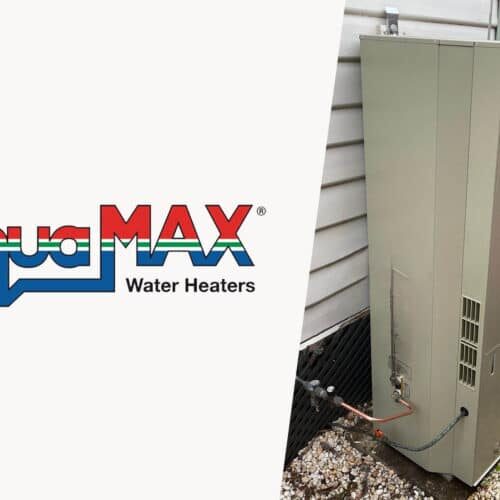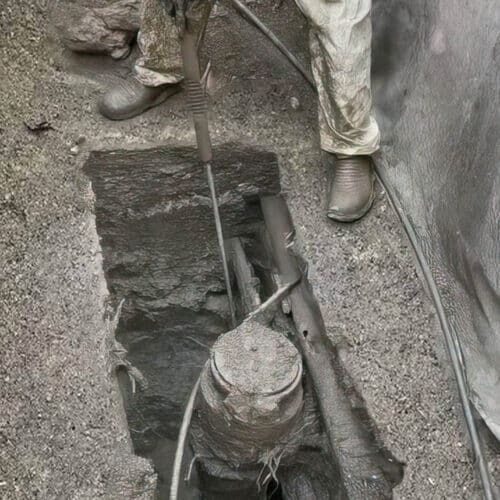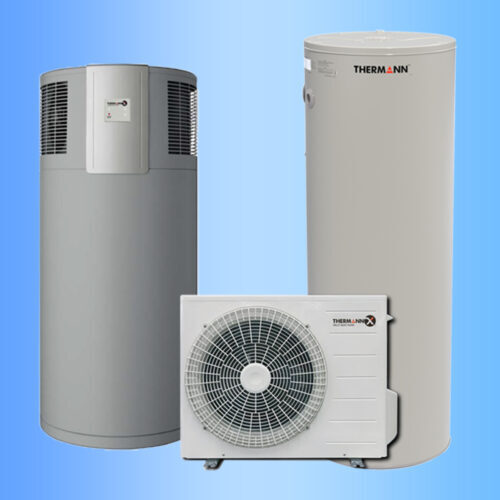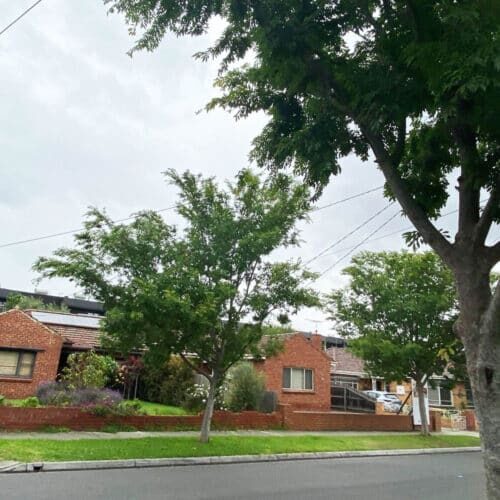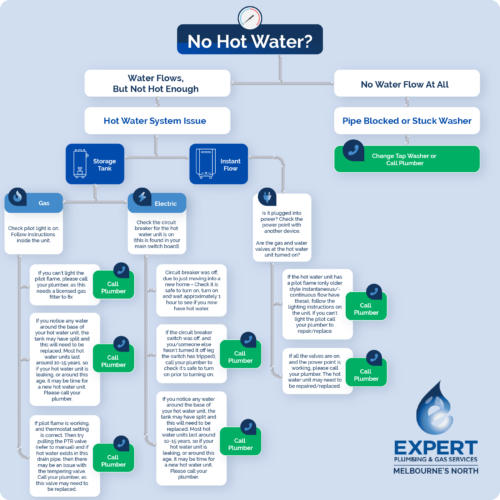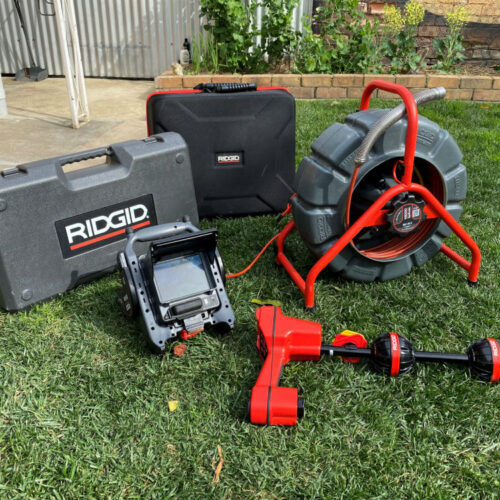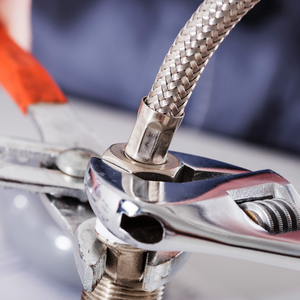Which Rainwater Tank is Right For You?
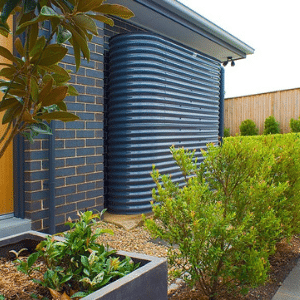
Rainwater tanks can collect all of the water that falls on your roof with correct planning. With a tank, you can reduce your water bills, minimise your environmental footprint and help maintain a green, healthy garden. Here is everything you need to know about rainwater tanks in Victoria.
Why install a rainwater tank in Melbourne?
- It can cut your yearly water consumption up to 30%, by flushing toilets, washing clothes and watering gardens
- It can shrink your environmental footprint by reducing your demand on mains water
- It reduces the amount of stormwater runoff into rivers and oceans
- It can reduce your water bill in the long term
- Many local councils provide incentives for installing rainwater tanks.
What are rainwater tanks made of?
Rainwater tanks come in four main material types: polyethylene, steel, fibreglass or concrete.
Polyethylene, also known as poly tanks, are known for being resilient, light and easy to transport. Poly tanks also come in a wide range of colours, so they can seamlessly blend into their surroundings.
Steel, such as Aquaplate or Zincalume tanks are available in the ColorBond steel colours, so they can match the look of your home. They have a food-grade polymer lining on the inside so water can be safely harvested. They are durable, stylish, recyclable and corrosion resistant.
Fibreglass tanks are rust and chemical-resistant and designed to withstand extreme temperatures. They're not the cheapest option, and are more suitable for above-ground installation.
Concrete tanks are strong, can be installed above or underground and have the best bushfire resistance. They are available prefabricated or can be constructed on site to meet the specific homeowner requirements.

From left to right: Aquaplate, slimline poly and stainless steel rainwater tanks
What size tank should I choose?
Modern rainwater tanks come in all shapes and sizes which make efficient use of small or tricky urban spaces.
When deciding the best size for your tank consider:
- What is the average amount of water consumed? This information is available from your water supplier, generally found on your water bill. You can also try the calculator on the Tankulator website.
- What is the local rainfall pattern? You can find this on the Bureau of Meterology website. In areas with highly variable rainfall, bigger tanks may be required for the same supply of rainwater.
- What is the area of roof draining to the tank? The general calculation is 1mm of rainfall on 1m2 of roof area = 1L of rainwater. You can use Google Earth to measure the perimeter of you roof via satellite photos.
- What is the security of water supply you need? A larger tank volume leaves fewer periods without rainwater. It allows you to catch as much as you can in a big down pour, so you have plenty of reserves until next time it rains.
- Where will it be located? Do you have the space for an above ground tank, or would you prefer an underground tank? With below ground tanks, you only will see the access hatch. These can be installed in the middle of your lawn or driveway. There is also bladder tanks for under houses or decks, where the tank sits on a bed of sand and inflates when water enters the tank.
While each circumstance is unique, another general rule is to get the tank as big as you can fit. If you have the room, look to get the maximum size you can.

From left to right: An underground tank being installed and a range of sizes of slimline poly tanks
How much does a rainwater tank cost?
Rainwater tanks can range from around $700.00 to $10,000.00, starting from small, freestanding models to large, custom-built models. Costs vary depending on the size, material, finish, and strength of the tank.
Here are some pricing examples of above ground tanks (incl GST):
|
Plastic |
Aquaplate (Steel) |
Stainless Steel |
Concrete |
Fibreglass | ||||
| Tank Size | Round | Slimline | Round | Slimline | Round | Slimline | Various | Round |
| 2000L | $850 | $1,200 | $1,000 | $1,000 | $1,600 | $2,500 | $1,400 | N/A |
| 3000L | $1,000 | $1,600 | $1,000 | $1,200 | $1,700 | $3,600 | $2,000 | N/A |
| 5000L | $1,200 | $2,000 | $1,500 | $2,000 | $2,200 | $4,000 | $3,000 | $1,400 |
| 10,000L | $1,800 | $4,000 | $2,400 | $4,000 | $3,600 | $8,000 | $4,000 | $2,200 |
| 20,000L | $2,500 | $8,000 | $3,200 | $8,000 | $5,000 | $16,000 | $7,000 | $3,200 |
Prices sourced from Tankulator.ata.org.au
Other costs may include:
- Transport, crane and/or excavation costs for placing tanks underground
- Tank stand or foundation
- Rain tank to mains pressure pump with switch over device and cover
- Insect-proof screening and gutter guards
- Pumps (if necessary)
- Installation and maintenance costs

Tank accessories from left to right: Water pump, Rain2Main switching unit, rainhead with leaf guard and first flush diverter
How does a rainwater tank get installed?
A good rainwater tank will last you for decades and save you money over time, but only if it is correctly installed.
Your tank should sit on a strong foundation, such as hardwood decking, reinforced concrete, or a tank stand. It should also be secured or filled to 25mm to prevent blow-away.
The connection of a rainwater tank is regulated plumbing work in Victoria, regardless of the use of the rainwater. This means that tanks can only be installed by a qualified plumber. The plumber will also be able to check that your rainwater harvesting system as a whole is compliant and effectively designed.
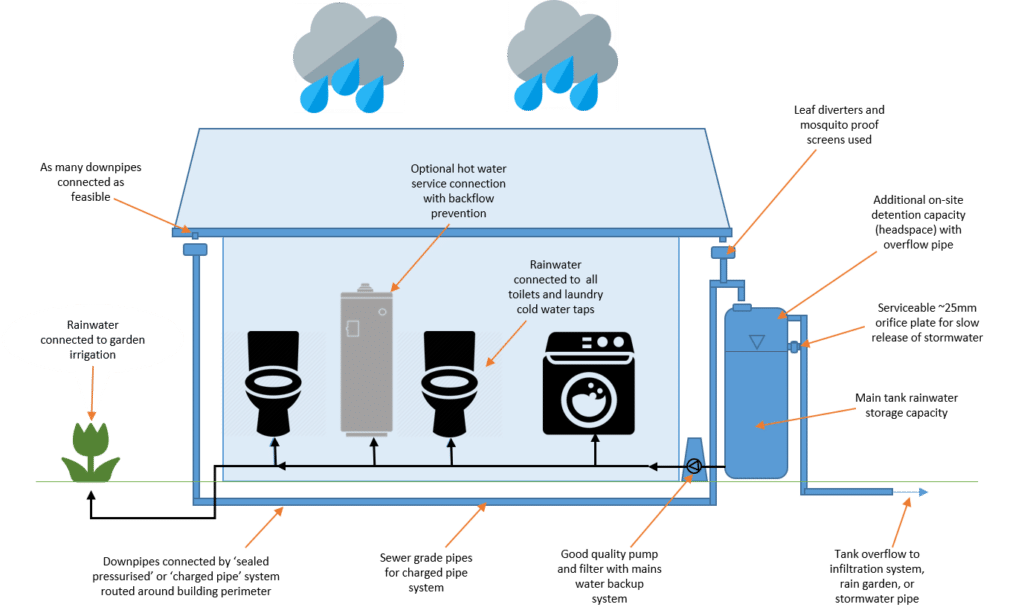
How does rainwater tank maintenance work?
To get the most out of your rainwater tank, you will need a well-maintained tank and roof catchment system.
At least every six months, you should check:
- Your gutters: They will generally need cleaning as well as inspection. Gutter shields can be used to stop the collection of larger tree and plant material. Gutters should have a sufficient and continuous fall to prevent pooling of water.
- Your roof: Check for accumulated debris including leaf and other plant material. You should prune trees with overhanging branches and clear out any build up of leaves and other rubbish
- Tank inlets, insect-proofing and leaf filters: If necessary, these should be cleaned and repaired.
- Your pump: Check the pump turns on/off when a connect tap is opened/closed, so you can check rain water is being used. Clean any pump filters and check for any leaks or unusual operational sounds.
- Internal inspection: Check for evidence of access by animals, birds or mosquitoes. If there is any evidence of algal growth (green), find and close points of light entry.
As well as six-monthly inspections, yo should have your tanks inspected every 2–3 years for the presence of accumulated dirt and debris.
What are the regulations around rainwater tanks in Melbourne?
It’s important to check with your local council which rules and regulations apply in your area.
- You may need to submit a development or building application.
- There may be rules around drinking rainwater or mosquito breeding prevention.
- There may be restrictions on the tank's location, colour, height, and labelling.
- There may be noise regulations for a pump.
Although rainwater is free, it is not free from contamination. Rats, possums, and birds all spend time on your roof. Their faeces makes its way into the gutters and washes into the water tank. This means that the water in rainwater tanks is often not fit to drink or brush your teeth with. The mains water supply is best for drinking and cooking because it is filtered, disinfected and, generally, fluoridated.
For nearly everything else, you can use rainwater, such as for gardening, toilets and even laundry.
For further reading, read “Guidance on Use of Rainwater Tanks” prepared by the Australian Government Department of Health and Ageing. This gives a comprehensive overview of the health guidelines for rainwater tank usage and installation in Australia.
Call Expert Plumbing & Gas Services for advice on rainwater tanks
Our qualified team of plumbers have years of experience in helping you design, install and maintain your rainwater tank and harvesting systems, helping you save money and the environment.
You can reach out today by calling (03) 9486 5907 or leaving an enquiry via our contact form.


